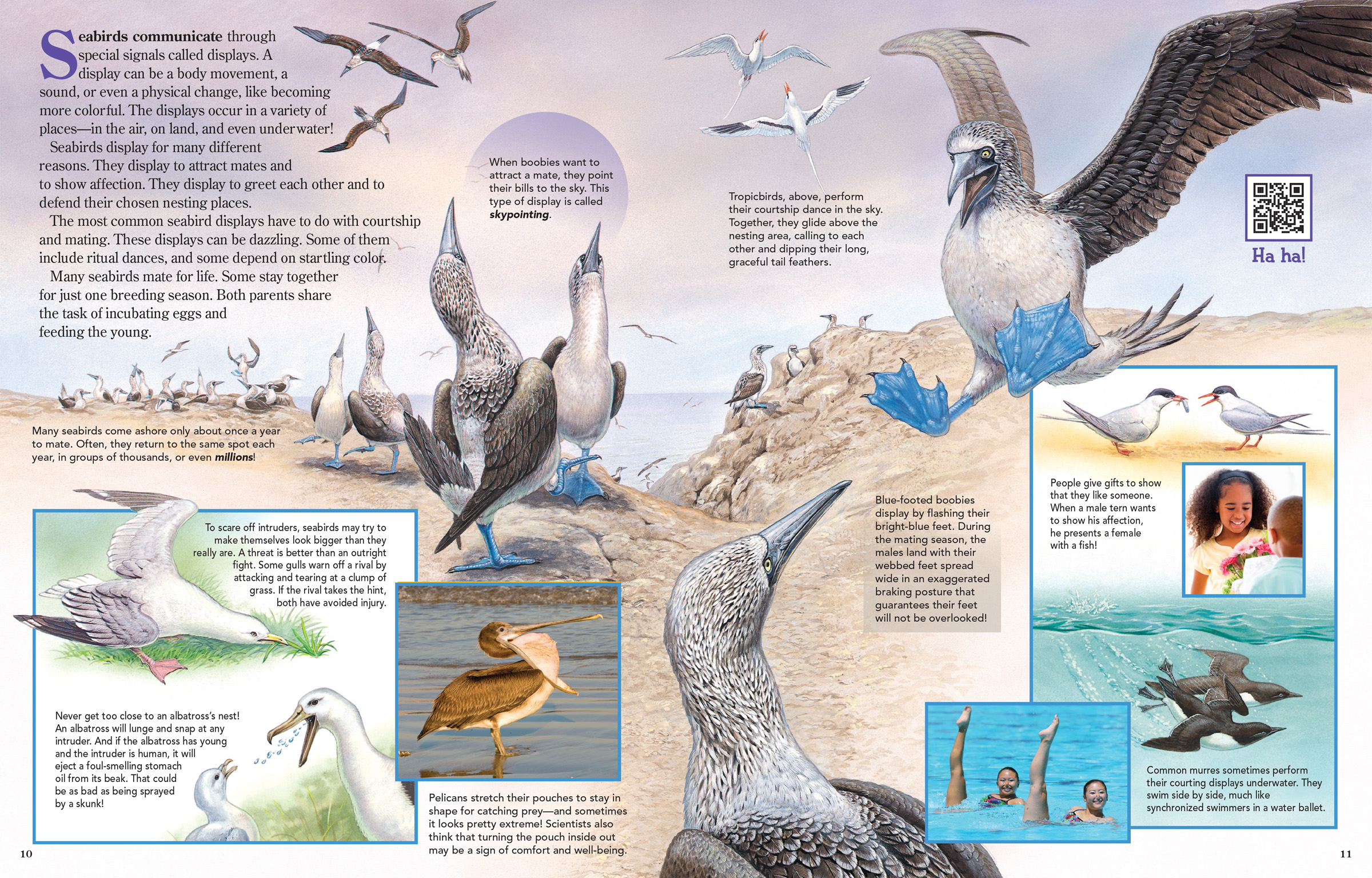
Seabirds Communicate by Displays
BySeabirds communicate through special signals called displays. A display can be a body movement, a sound, or even a physical change, like becoming more colorful. The displays occur in a variety of places—in the air, on land, and even underwater!
Seabirds display for many different reasons. They display to attract mates and to show affection. They display to greet each other and to defend their chosen nesting places.
 The most common seabird displays have to do with courtship and mating. These displays can be dazzling. Some of them include ritual dances, and some depend on startling color.
The most common seabird displays have to do with courtship and mating. These displays can be dazzling. Some of them include ritual dances, and some depend on startling color.
Many seabirds mate for life. Some stay together for just one breeding season. Both parents share the task of incubating eggs and feeding the young.
Many seabirds come ashore only about once a year to mate. Often, they return to the same spot each year, in groups of thousands, or even millions!
When boobies want to attract a mate, they point their bills to the sky. This type of display is called skypointing.
To scare off intruders, seabirds may try to make themselves look bigger than they really are. A threat is better than an outright fight. Some gulls warn off a rival by attacking and tearing at a clump of grass. If the rival takes the hint, both have avoided injury.
Never get too close to an albatross’s nest! An albatross will lunge and snap at any intruder. And if the albatross has young and the intruder is human, it will eject a foul-smelling stomach oil from its beak. That could be as bad as being sprayed by a skunk!
Pelicans stretch their pouches to stay in shape for catching prey—and sometimes it looks pretty extreme! Scientists also think that turning the pouch inside out may be a sign of comfort and well-being.
Tropicbirds, above, perform their courtship dance in the sky. Together, they glide above the nesting area, calling to each other and dipping their long, graceful tail feathers.
Blue-footed boobies display by flashing their bright-blue feet. During the mating season, the males land with their webbed feet spread wide in an exaggerated braking posture that guarantees their feet will not be overlooked!
People give gifts to show that they like someone. When a male tern wants to show his affection, he presents a female with a fish!
Common murres sometimes perform their courting displays underwater. They swim side by side, much like synchronized swimmers in a water ballet.

